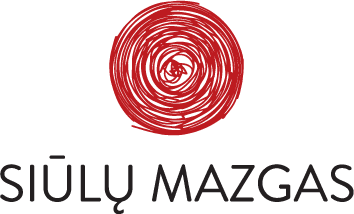In the rapidly-evolving digital landscape of 2024, Software-as-a-Service (SaaS) startups have taken center stage, transforming the way businesses operate globally. This sector’s potential for substantial ROI has drawn the attention of investors and aspiring entrepreneurs alike. Yet, carving a profitable niche in this highly competitive market is no easy feat. It requires strategic planning, clear vision, and a deep understanding of market trends, challenges, and profitability metrics. This article elucidates these facets, providing a comprehensive guide to establishing a profitable SaaS startup in these modern times. Stay with us as we delve into the current SaaS market overview, examine pertinent challenges, and unlock key strategies pivotal to your SaaS startup’s success.
Current SaaS Market Overview
The realm of Software as a Service (SaaS) has witnessed an incredible surge in growth and reliance in recent years. As businesses increasingly shift to digital operations and consumers become more comfortable with online platforms, SaaS has effectively penetrated every industry sector and geographical territory.
Current Growth and Future Projections
The evidence of this rapid rise can be seen solely in the numbers. The global SaaS market catapulted from $212 billion in 2021 to a staggering $241 billion in 2022. But it doesn’t stop there. Future projections suggest that this upward trajectory is not going downhill anytime soon. As per market forecasts, the SaaS market is projected to be worth a colossal $716.52 billion by 2028.
What is driving this dynamic growth, you ask? Quite simple – the mushrooming demand for SaaS solutions is due to their ability to offer accessibility, cost-effectiveness, and scalability. With SaaS, businesses can optimize their operations, streamline workflow, and minimize hefty upfront costs.
Role of Cloud
Not to be forgotten is the indispensable role of cloud technology in the expansion of the SaaS market. As businesses embrace the digital wave, the uptake of cloud-driven applications has skyrocketed. With the cloud market predicted to be worth $623.3 billion by 2024, it is unambiguous that the reliance on cloud technology continues to grow. The cloud facilitates a flexible and scalable environment for SaaS applications to thrive, offering businesses the leeway to adapt to changing market dynamics swiftly.
Micro SaaS and Its Growth
One aspect of the SaaS market that deserves special mention is Micro SaaS. Defined as narrowly focused software solutions that fulfill a specific task in a business process, Micro SaaS is a rising star in the industry. The projected Compound Annual Growth Rate (CAGR) of 25.0% from 2020 to 2025 elucidates that the niche yet impactful offerings from Micro SaaS developers are garnering global attention.
In conclusion, in our present day and future, there lies an undeniably enormous dependence on and expectation from the SaaS market. Its intersection with cloud, and sub-sectors like Micro SaaS, creates a dynamic ecosystem in which businesses can operate more efficiently while adapting to rapidly evolving market needs. The data speaks for itself; the SaaS market is on course to become a dominant, if not the vital, constituent of global technology infrastructure.
Challenges & Risks for SaaS Startups
The world of entrepreneurship is an invigorating landscape of innovation and potential. Yet, it can also be a terrain littered with obstacles and challenges, specifically in the realm of Software as a Service (SaaS) startups. These ventures face both prevalent startup struggles and unique pitfalls. Understanding these challenges and risks is a vital aspect of navigating the roadmap to success.
Failure Rates & Factors
Commencing with broad strokes, let’s address the elephant in the room – the failure rate for new startups. A staggering 90% of such ventures find themselves unable to maintain sustainable progress, essentially evaporating before leaving any substantial mark. This harsh reality is only exacerbated in the world of SaaS startups. The failure rate for this sector is even higher, with over 90% of startups in this space failing to achieve their goals.
But what factors contribute to this bleak outlook? A few prominent culprits include:
- Inadequate market demand
- Insufficient capital
- Ineffective marketing strategies
- Poorly defined target audiences
- Sub-par customer service
These all can build the perfect storm for failure, with insufficient market demand often topping the list.
Success Rates & Factors
Contrastingly, let’s shift our focus to the greener side of entrepreneurship – the success rates. It’s equally important to ponder upon the conditions and factors that cultivate a triumphant trajectory for some startups. On average, the success rate of startups hovers around 10%. It’s interesting to note that this percentage drops slightly for the fintech startups, where only 25% manage to triumph. Furthermore, the odds tighten up more if you happen to be a first-time founder, with their success rates pinned at 18%.
So what sets these successful startups apart from the rest? A number of factors bolster their chances:
- Identifying and filling a genuine market need
- Strong financial management
- A robust, motivated team
- Excellence in product and service delivery
- Persistent adaptability
All these factors amalgamate to sketch a more optimistic picture amid the challenging SaaS startup landscape.
Ultimately, these figures and insights present a realistic look into the SaaS startup world. While the path to success may be strewn with challenges and risks, these pitfalls can also become stepping stones. Knowledge of the potential obstacles empower startups to create proactive strategies. It’s a game of resilience, innovation, savvy business tactics, and perhaps even a dash of luck.
Profitability Metrics for SaaS Startups
Capitalizing on the expansive digital market, SaaS (Software as a Service) startups are consistently multiplying. However, not all that glitters is gold. To truly unearth viable prospects worth investing time, capital, and effort into, it’s crucial to understand the profitability metrics specific to SaaS businesses. Today, let’s delve into three insightful measures – Median Growth Rate, Revenue Multiple, and Expected Returns.
Median Growth Rate
The profitability of a SaaS startup is closely linked to its growth rate. It’s interesting to observe that the median growth rate for public SaaS companies is around 22%. On the other hand, bootstrapped SaaS companies, with an Annual Recurring Revenue (ARR) of between $3M and $20M, display a higher growth rate, hovering around 30%. This discrepancy indicates that business strategy can significantly influence the startup’s growth journey, not merely the availability of public funding.
Revenue Multiple
As an investor or a startup founder, calculating the Revenue Multiple is another advantageous path to analyze profitability. Believe it or not, the average revenue multiple of SaaS businesses hit a whopping 7.8x in 2024. This figure manages to encapsulate the revenue relative to the value of the company. Demonstratively, a higher multiple can often signify an elevated expectation of future growth or an undervalued company.
Expected Returns
Predicting profits for a SaaS startup isn’t just a game of chance; it’s a calculated risk that every investor must take. The annualized expected returns for early-stage SaaS companies seem to promise a sunnier outlook compared to other industries, being about 5.5% higher. This edge portrays the SaaS industry’s potential and resilience, easing the minds of those initial skeptics.
In this ever-evolving digital landscape, understanding and effectively using these profitability metrics can make the difference between riding the wave of SaaS success and falling off the surfboard. Remember, the numbers never lie. So keep these figures in mind, don your thinking cap, and embark on a journey towards profitable SaaS startup investments.
Strategies for SaaS Startup Success
The journey of setting up a successful Software as a Service (SaaS) startup might be complex, but it can be made smoother by adopting certain strategies. SaaS success no longer depends solely on the product or service provided, but rather, on strong customer relationships, target market understanding, and strategic planning. As we embark on exploring proven strategies for SaaS startup success, keep in mind that these methods have been tested and vetted by successful firms in the field.
Developing Key Customer Success Teams
Building a robust and effective customer success team isn’t just an option anymore; it’s essential. Approximately 65% of SaaS firms strongly rely on customer success teams for their upselling efforts. Why? Because in the SaaS model, customers continually evaluate the value derived from their chosen solutions. If they don’t see that value, they can easily switch providers. This underlines the significant role a customer success team can play – helping your customers to recognize and enjoy the full value of your services, thereby strengthening long-term customer relationships.
Leveraging Data-Driven Insights
Data is the new oil. For any SaaS startup, unlocking the value of data can lead to unprecedented growth. SaaS marketing is more strategic and centered on fostering long-term relationships than conventional marketing. Using data-driven insights to understand customer behavior trends, usage patterns, and needs can significantly enhance their overall experience and satisfaction. This, in turn, will not only help to retain existing customers but also attract potential ones.
Finding Focus Problem Space and Solution
One fundamental key to the success of SaaS companies involves identifying a focused problem space and constructing an intuitive solution. By understanding the customer’s pain-points, startups can offer solutions that customers truly need, thereby increasing the possibility of success. Furthermore, technical advancements such as the democratization of software development through no-code platforms, are making the process of developing SaaS applications quicker and more straightforward.
Executing a Go-To-Market Strategy
Lastly, even the most fantastic SaaS product wouldn’t see the light of the day without an effective go-to-market (GTM) strategy. This entails understanding the market, knowing who you’re selling to, market segmentation, defining customer profiles, developing appropriate pricing strategies, and devising effective sales and distribution models. Essentially, your GTM strategy should outline how you will reach your target market and achieve your revenue targets.
So there you have it – four critical strategies to ensure your SaaS startup is set on the path to success. Remember, starting a SaaS company is more of a marathon than a sprint. The ideal way to persevere is to maintain focus on your primary objective, be patient, and stay committed to these key strategies. With the right approach, you’ll see your SaaS startup thrive in no time.
Conclusion
Establishing a profitable SaaS startup in 2024 doesn’t have to be an elusive dream. With a deep understanding of the market, clear-eyed awareness of potential risks, diligent attention to crucial metrics, and strategic implementation of success-driving practices, aspiring entrepreneurs can turn their SaaS visions into thriving realities.
However, this journey, while rewarding, is complex and requires not just expertise but also agility and foresight. That’s where partnering with the right digital marketing agency makes all the difference. Trusted experts like Defined Chase empower SaaS startups with data-driven insights, strategic marketing initiatives, comprehensive digital strategies, and more, catapulting them towards sustainable growth and profitability.
The future of SaaS is bright and full of opportunities. So whether you’re envisioning a disruptive startup or seeking to scale an existing enterprise, with the right approach and the right partners, you can architect a success story that speaks volumes in the competitive SaaS landscape of 2024 and beyond.
Frequently Asked Questions
- What is a SaaS startup?
A SaaS startup, short for Software-as-a-Service startup, is a business that provides software applications or services to customers through a subscription model, typically accessed via the internet.
- What are the steps to establish a profitable SaaS startup?
To establish a profitable SaaS startup in 2024, follow these steps: 1. Identify a niche or target market, 2. Validate your idea and conduct market research, 3. Develop a minimum viable product (MVP), 4. Build a customer acquisition and retention strategy, 5. Launch your product and iterate based on customer feedback, and 6. Focus on scaling and monetization.
- What are some key challenges faced by SaaS startups?
Some common challenges faced by SaaS startups include: 1. Intense competition, 2. Customer acquisition and retention, 3. Pricing and monetization strategies, 4. Scalability and infrastructure management, and 5. Keeping up with evolving technology trends and customer demands.
- How important is marketing for a SaaS startup?
Marketing is crucial for a SaaS startup as it helps create awareness, generate leads, and acquire customers. Implement effective digital marketing strategies such as content marketing, social media marketing, SEO, and PPC advertising to reach your target audience and drive growth.
- What metrics should I track to measure the success of my SaaS startup?
Some important metrics to track for a SaaS startup include: 1. Monthly Recurring Revenue (MRR), 2. Customer Lifetime Value (CLTV), 3. Churn rate, 4. Customer acquisition cost (CAC), 5. Conversion rate, and 6. Net Promoter Score (NPS). These metrics provide insights into revenue, customer satisfaction, growth, and retention.















